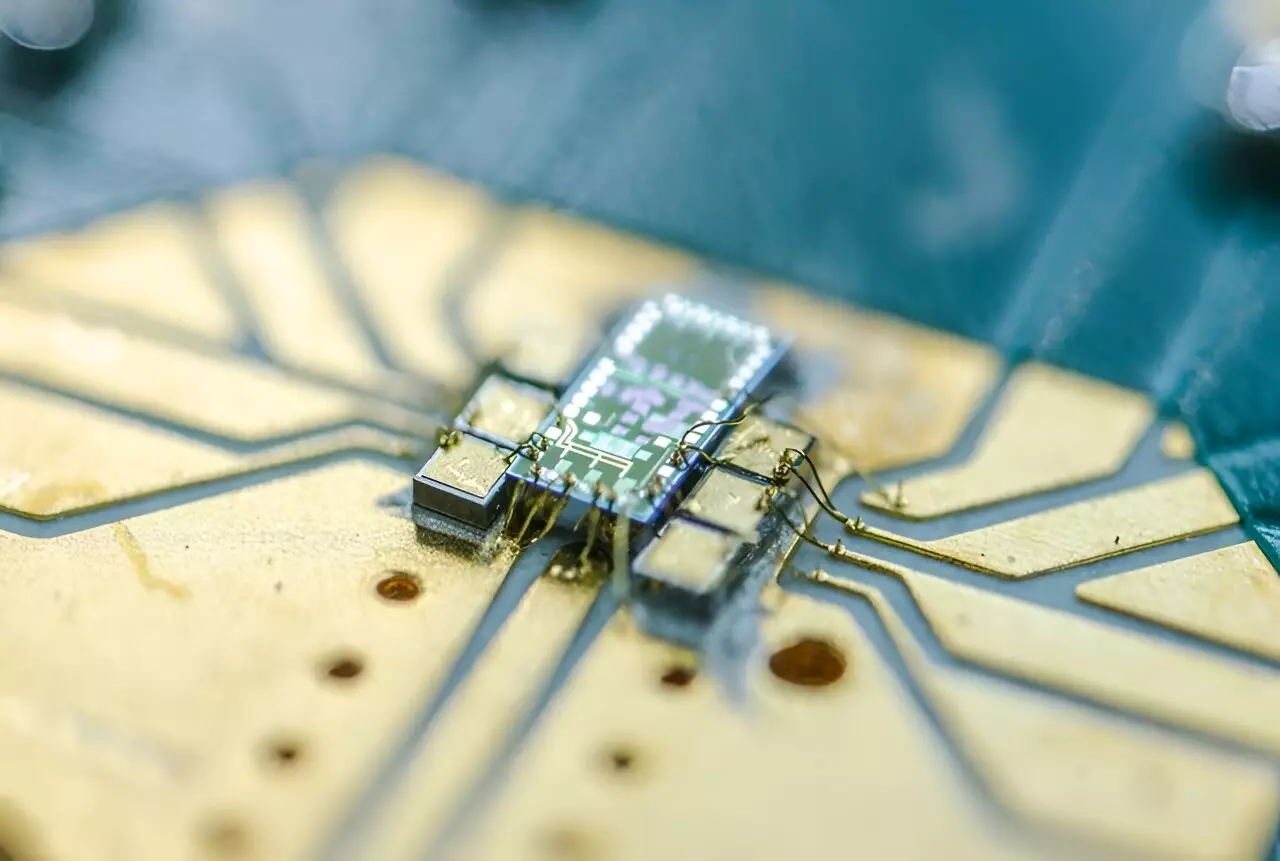The University of Bristol researchers have recently achieved a significant milestone in the field of quantum technology by successfully integrating the world’s smallest quantum light detector onto a silicon chip. This groundbreaking accomplishment, showcased in their paper titled “A Bi-CMOS electronic photonic integrated circuit quantum light detector” published in Science Advances, marks a pivotal moment in the journey towards advancing quantum technologies using light.
The integration of this quantum light detector, which is smaller than a human hair, onto a silicon chip signifies a crucial step forward in the development of high-performance electronics and photonics at scale. By demonstrating the ability to miniaturize quantum technology components and incorporate them into commercial facilities, the researchers at the University of Bristol are paving the way for the next generation of advanced information technologies.
The quantum light detector implemented on a chip with a compact circuit size of 80 micrometers by 220 micrometers holds immense potential for enabling high-speed quantum communications and facilitating the operation of optical quantum computers. These detectors, known as homodyne detectors, operate at room temperature and have a wide range of applications in quantum optics, quantum communications, sensitive sensors, and the development of quantum computers.
In a groundbreaking move, the Bristol team has successfully increased the speed of quantum light detectors by a factor of 10 and reduced the footprint by a factor of 50 by combining photonics and electronics on a single integrated chip. Despite their small size and high speed, these detectors maintain a high level of sensitivity to quantum noise, which is essential for measuring quantum states accurately and reconstructing quantum information.
While the current achievements in integrating quantum light detectors onto silicon chips are remarkable, there is still more research to be done to enhance the efficiency of these detectors and explore their applications in various fields. The research team aims to continue pushing the boundaries of quantum technology by scaling down disruptive quantum hardware to chip size and making them commercially accessible for broader applications.
As Professor Jonathan Matthews emphasizes, the journey towards scalable fabrication of quantum technology is a critical challenge that the research community must address collectively. By leveraging the advancements in quantum light detectors and integrating them onto silicon chips, we are not only unlocking the potential for high-speed quantum communications and optical quantum computers but also opening up a myriad of opportunities for innovative technologies in sensing and communications.
The successful integration of quantum light detectors onto silicon chips by the University of Bristol researchers represents a significant milestone in the advancement of quantum technologies. With continued research and development efforts, we can expect to see further innovations in the field of quantum technology, paving the way for a future powered by quantum computing, high-speed communication, and advanced information technologies.


Leave a Reply